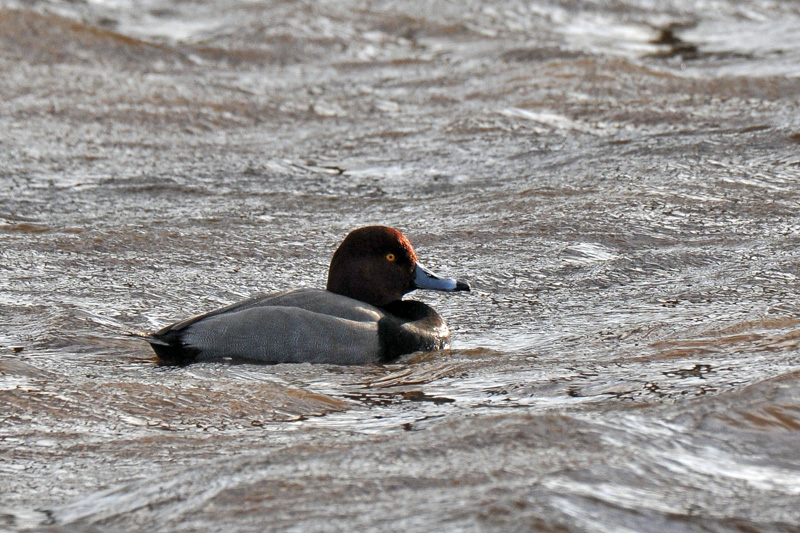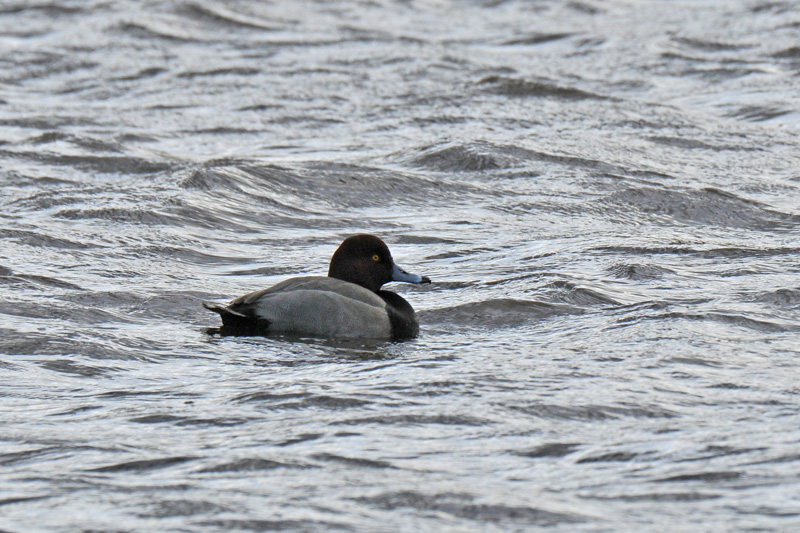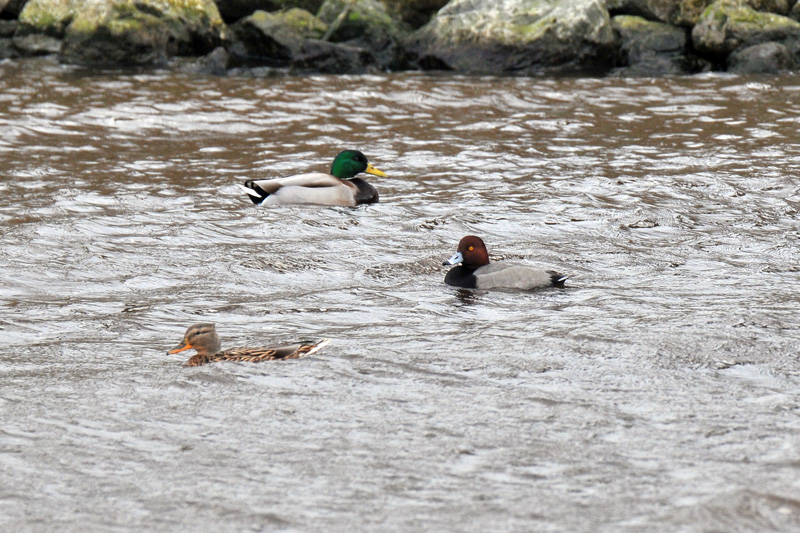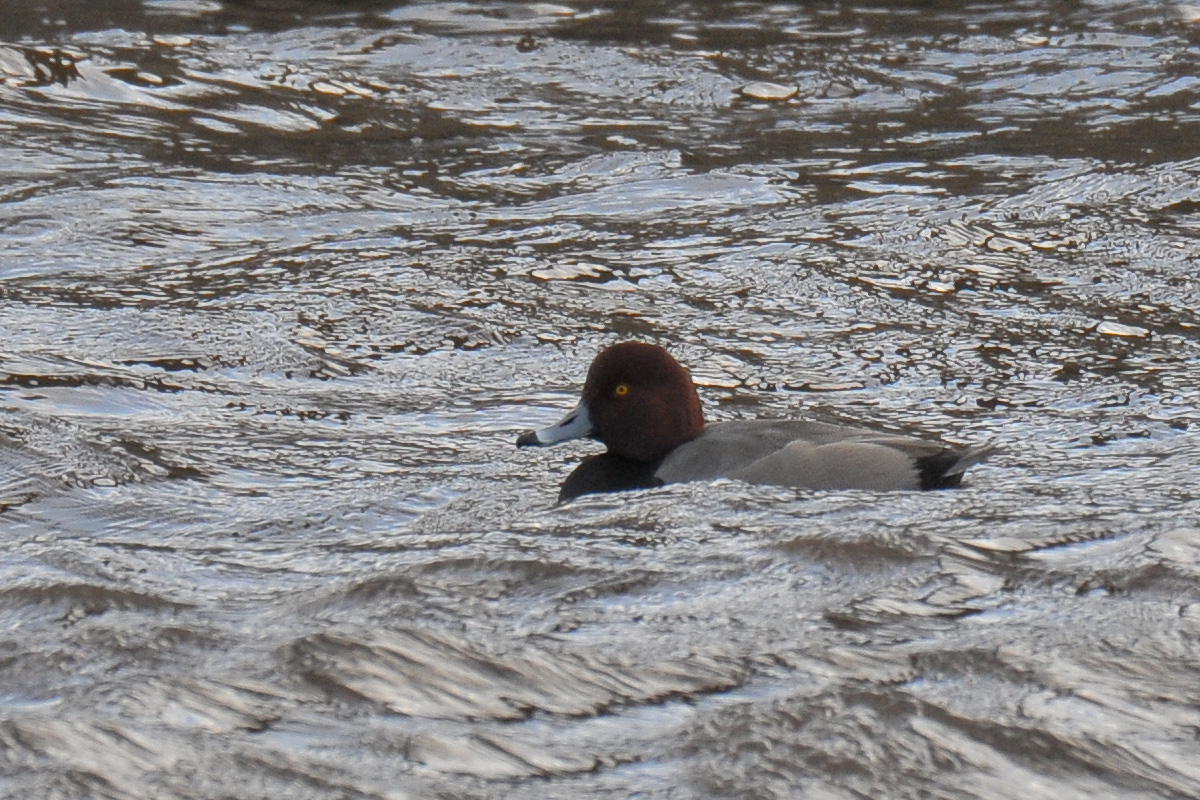On Tuesday 19 January 2016 Gertjan van Noord photographed a duck in the van Starkenborgh Kanaal between Zuidhorn and Aduard, Groningen. He uploaded his photographs on the internetsite waarneming.nl and asked other birders for advise. The pictures were photographed during overcast wheather, making all colours dull. The bird was subsequently not found despite some effort by local birders from nearby city of Groningen, where a keen birding community flourishes.
On 2 February Gertjan refound the bird at the same locality and now several birders from the whole country were able to see the bird. However several photographs revealed the bird had damaged tips of p7-p10, making a bird escaped from captitvity highly likely. Close examination showed the primary tips were most probably broken instead of clipped, but for either opinion there was no hard proof, though the pattern fits a broking shaft best as the shape of the top is V-shaped. When clipped, the top would be straight. On several sites however, similar damage was quickly found (especially this photo). Life for ducks is harsh indeed.
On subsequent days the bird had disappeared again, but was rediscovered on 7 February by Peter Post. The bird stayed till dark and c 60 birders were again able to see the bird, including me! In the following days, the bird proved to be very elusive and showed itself only on 9 February, 11 February, 14 February, 19 February, 1 March, 4 March, 9 March and finally on 12-13 March.




It was accepted as the first record for the Netherlands. Redhead is extremely rare in Europe as there are only four previous records, i.e. one in the UK (March 1996, Bleasby, Nottinghamshire and February 1997, Rutland Water, Leicestershire & Rutland), two on Iceland (15 June to 10 July 1998, male at Rif, Sæfellsnessysla and another male on 11 July 1998 at Fuglavik a Mionesi, Gullbringusysla) and one in Ireland (12-15 July 2003 on Cape Clear Island, Cork).
Go to the main-index, the 2016-index or the next new species, the Moustached Warbler?